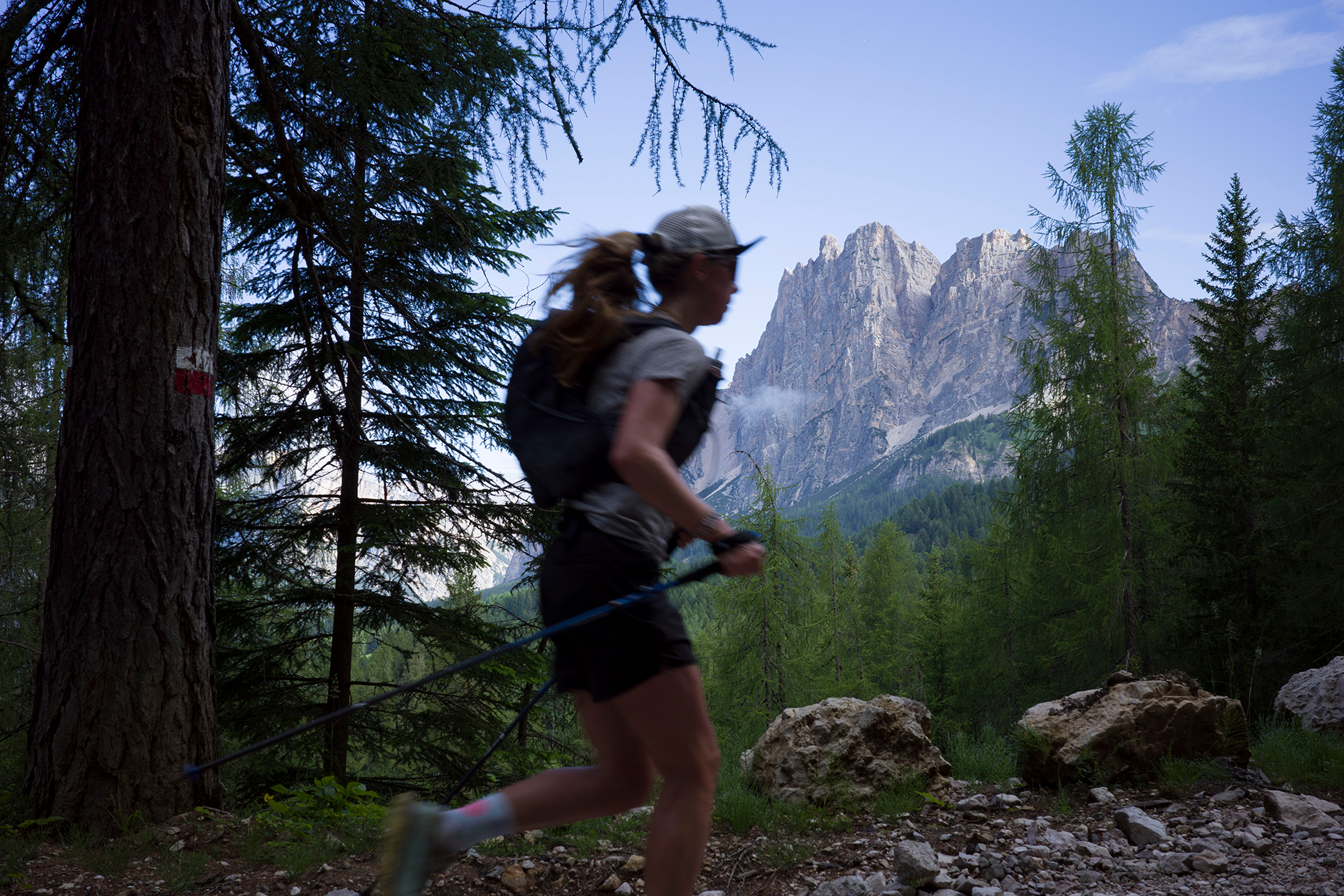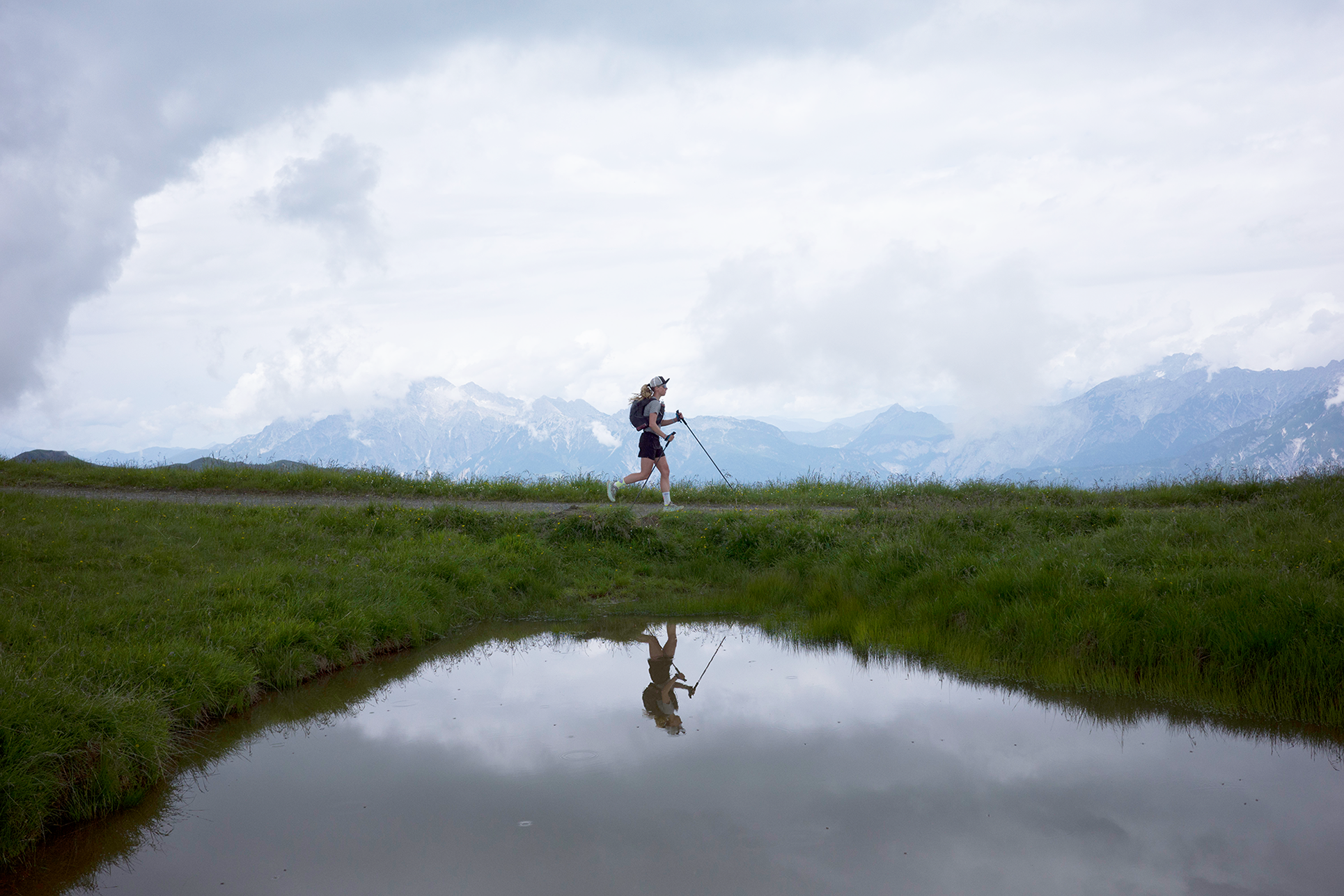08.09.23 - Pushing the GR IIIx to its limits. A report on the experience of crossing the Alps.
GR IIIxCrossing the Alps with Ricoh GR IIIx
The joy of sport and photography often come together. Here it is often cyclists and runners who discover many interesting things, especially over longer distances. It's a pity if you don't have a camera with you, because large dimensions and heavy weight are often the reason why the camera stays at home. A Ricoh GR might be a good solution for this.
Henning Lenertz, editor of Runners World magazine in Germany, undertook a sporting challenge and a journey of a very special kind together with his wife Christiane, which he reports on in issue 9/23.
On the adventure of crossing the Alps on foot within 7 days, it was important to start with only the bare essentials, and he did without almost everything, but was determined to take a photo camera with him.

We were happy to provide him with a Ricoh GR IIIx and read with great excitement his report of the adventure, where even ice and cold did not harm the two runners or the camera.
His experiences on this tour reflect many questions from people interested in the GR, which prompted us to ask for his insights in the following short interview.
And we were particularly interested in why he only took the very basic essentials with him, but didn't want to leave without his camera.
Henning: I really like taking snapshots with my iPhone, but compared to a camera, I simply lack the setting options. I am someone who likes to play with the aperture or sharpness and blur. With a camera, I can consciously control that, whereas with a smartphone, I am more or less at the mercy of the results of the software. In addition, with regard to the reportage in the magazine, it was important to me that I have a large sensor that gives me much more detail in comparison.
I also really liked the camera's switch-on time. As soon as I pulled it out of the pocket of the backpack, I could shoot photos straight away.
Assuming that it would be more suitable for mountain scenes, we recommended the GR IIIx. It has a lens that is not quite as wide-angled as the GR III, but you didn't like that at all, why?
Henning: On the often very narrow slopes, I would have preferred to have a wider-angle lens with me to capture these special impressions, because taking a step back to get the shot could have been fatal.
 RICOH GR IIIx // ISO 1250 // Exposure time: 1/1000 sec. // Apperture: F7.1
RICOH GR IIIx // ISO 1250 // Exposure time: 1/1000 sec. // Apperture: F7.1
We also discussed the consideration of battery power before the tour. We wanted to be on the safe side and gave a few spare batteries, but you didn't need them at all...
Henning: I never managed to empty a battery in one day. Despite dozens of switch-on and switch-off operations and certainly almost a hundred photos a day, the battery was never completely empty in the evening. I charged the battery directly via USB-C in the camera in the evening. So in the end I never needed the two spare batteries.
When you asked us about the camera, we had slight concerns about the external conditions during your trip, where you also had to reckon with rain, cold and maybe even snow. The GR III has often shown what it can withstand, but it is not an outdoor camera.
Henning: I never had the feeling that I had to treat the camera with special care - but of course I did. Most of the time I just kept it in a mesh or zipped pocket at the front of my backpack, so I always had it to hand.
 RICOH GR IIIx // ISO 3200 // Exposure time: 1/6400 sec. // Apperture: F5
RICOH GR IIIx // ISO 3200 // Exposure time: 1/6400 sec. // Apperture: F5
Thank you very much at this point for the short interview. But even if the camera is not designed to withstand this level of extreme adventure well, if you have to carry it with you, it should at the very least be taken in a ziploc bag during sporting activities. Cyclists keep valuables, IDs and also the camera on cycling tours in sealable freezer bags to give them a bit of added protected from moisture.
Ultimately this is about getting the balance right between the limitations of the camera and capturing the breathtaking images, like those we see here.
In this context, we often get requests about a metallic clack when the camera is shaken. Don't worry, this is not bad and is due to the IBIS unit. This is located in a metal frame to compensate for camera shake at slow shutter speeds. With a freedom of movement of about 3 mm in each direction, it is held in position by magnets only at the moment of shooting, ensuring sharp and brilliant images.
 RICOH GR IIIx // ISO 200 // Exposure time: 1/125 sec. // Apperture: F8 // EV Compensation +0,3EV
RICOH GR IIIx // ISO 200 // Exposure time: 1/125 sec. // Apperture: F8 // EV Compensation +0,3EV
 RICOH GR IIIx // ISO 200 // Exposure time: 1/320 sec. // Apperture: F7.1 // EV Compensation +0,3EV
RICOH GR IIIx // ISO 200 // Exposure time: 1/320 sec. // Apperture: F7.1 // EV Compensation +0,3EV
 RICOH GR IIIx // ISO 320 // Exposure time: 1/2000 sec. // Apperture: F5
RICOH GR IIIx // ISO 320 // Exposure time: 1/2000 sec. // Apperture: F5
 RICOH GR IIIx // ISO 320 // Exposure time: 1/1000 sec. // Apperture: F9 // EV Compensation -0,3EV
RICOH GR IIIx // ISO 320 // Exposure time: 1/1000 sec. // Apperture: F9 // EV Compensation -0,3EV
So don't be without your camera even during sporting activities and don't miss any of the unique impressions during your tour.
We would like to thank the publishing house Motor Presse Hamburg GmbH & Co. KG and Henning and Christiane Lenertz for the pictures


